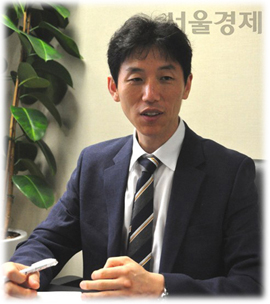| 일 | 월 | 화 | 수 | 목 | 금 | 토 |
|---|---|---|---|---|---|---|
| 1 | 2 | 3 | 4 | 5 | ||
| 6 | 7 | 8 | 9 | 10 | 11 | 12 |
| 13 | 14 | 15 | 16 | 17 | 18 | 19 |
| 20 | 21 | 22 | 23 | 24 | 25 | 26 |
| 27 | 28 | 29 | 30 |
- power and organization
- survival process theory
- Political Change
- 1st Law of politics
- Task Delegates of the Ruler: Inner Circle
- Regime Change
- Order of Choice
- the 3rd Law of politics
- Value Systems
- Political Regimes
- political phenomena
- new political science
- politics and war
- Political Regime
- political organization
- Orderliness of Choice
- Power
- Mathematical Model of political science
- politics of Inner Circle
- Samjae Capacity
- Political power
- mechanism of politics
- the 2nd law
- Cohesion Force
- politics
- Differences in Individual Abilities and Tendencies
- Canonical Politics
- Mathematical Model of politics
- Operation of the 2nd Law
- Samjae Capacities
- Today
- Total
New Political Science
a. ㉣ Regime Change Cost 본문
㉣ Regime Change Cost[Ch.3.304]
Next, let me consider the regime change cost, which is one of the factors of resistance. Every regime change incurs a cost. This is the total cost borne by the political organization(g) in the regime change, including the cost of people creating and adapting to a new rule system, and the socio-economic cost of conflict resulting from regime change.
To understand the regime change cost, you need to consider that, even a small regime change such as a micro-level change in leadership or a middle-level change in law, requires significant effort over a considerable period to adapt to the new regime, and there may be minor or major inconveniences and resulting losses. The regime change cost is the sum of the losses suffered by political actors due to regime change. Creating new rules is difficult, and people also find it hard to change their behavior in accordance with new rules due to the law of inertia. Therefore, the regime change cost is proportional to the size of the regime change.
Therefore, at the macro-level, the cost of any political action or event, including regime change, is generally greater when the national regime changes completely for various reasons. In the case of macro-scale and revolutionary regime change, significant costs are typically incurred. For example, as a result of the French Revolution of 1789, which caused a rapid change, France remained fundamentally in a pre-industrial society until 1815. In the case of Perestroika, Gorbachev's reform that began in the late 1980s, many popular protests demanding progress in reform, the demands of thousands of coal miners in 1989, and political and social costs that included a revival of nationalist movements within the Soviet Union had to be paid.
Not only revolutions, but also power transfers and political changes incur costs. Let me consider the process of Taejong handing over power to Sejong at the beginning of the Joseon Dynasty. When Taejong gave the royal seal to Crown Prince Chungnyeong(Sejong) on August 8, 1424, Sejong refused it by lying prostrate on the ground. Taejong had to pull Sejong up by the sleeves and enter the palace, while Sejong, with great solemnity, declined the transfer. Many courtiers were crying and wailing. During this period, it is unlikely that Joseon's government affairs could have functioned properly. Since the concentration of power in the early Joseon era was high, the transfer of power from Taejong to Sejong meant a significant regime change, and the costs associated with political change (regime change) were considerable. Even during the mid-Joseon era, when the concentration of power was alleviated during the reign of Seonjo, such chaos and confusion were reduced.
Even relatively small political changes, such as elections, new legislation, or changes in address systems, incur regime change costs. For example, if a strike opposing legislative reform follows, the resulting losses can be considerable. Elections also require significant economic costs, and the formalized nature of competition that makes winning and losing relatively clear can cause significant social costs to the losing party. The change from a local address system to a road-based system in South Korea, for example, falls under the cost of regime change, as the new address system was unfamiliar and inconvenient for many services. The disappearance of culturally significant place names, such as the "Cheonan Three- way Intersection," which was known as a famous landmark but lost its designation, is another example of the cost of regime change.
'Mechanism of Politics' 카테고리의 다른 글
| b. ㉠ Phenomena Implied by the 3rd Law (0) | 2023.12.14 |
|---|---|
| a. ㉤ Repression Force (0) | 2023.12.14 |
| a. ㉢ Profit Equilibrium Condition and Profit Equilibrium Flow (0) | 2023.12.14 |
| a. ㉡ Regime Change Force (0) | 2023.12.14 |
| a. Explanation of Key Concepts of the 3rd Law (0) | 2023.12.14 |
